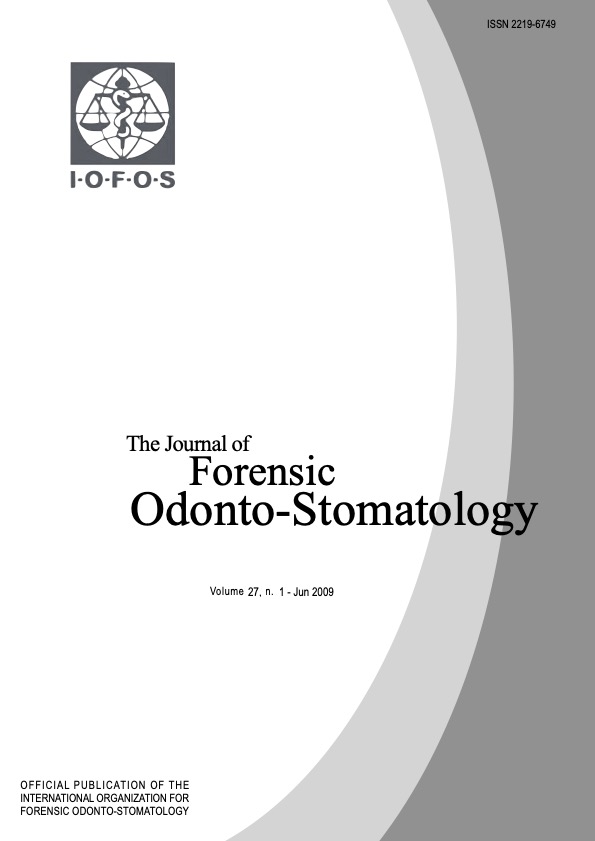The discrimination potential of radio-opaque composite restorations for identification: part 3
Abstract
The methods used for disaster victim identification is comparative postmortem profiling of dental and fingerprint data. Twelve dental concordant features are normally required for dental identification. The radiographic image of dental amalgam restorations has been shown to be highly significant for identification purposes. The aim of this study was to investigate the radiological morphology of standardized radio-opaque composite fillings in premolar teeth with regard to their discriminatory potential for identification purposes. Thirty lower first premolar teeth (“Typodont” acrylic teeth) that were filled with 3- surface fillings (MOD) radio-opaque composite resin (Z100) by 4th year dental students were used for this study. Bitewing radiographs were taken of all thirty fillings and labeled Set 1. A second set (Set 2) consisted of 10 randomly selected duplicate radiographs of Set 1, plus 2 other radiographic images not from Set 1. Instructions were given to 20 dentally trained examiners to match the 12 radiographic images of Set 2 with the 30 images of Set 1. The results showed that 18 of the 20 examiners correctly matched the 12 radiographic images, one scored 11 out of 12 and one scored 10 out of 12.
This study shows that if the ante-mortem and post-mortem radiographs of a single composite filling have exactly the same morphology, this image is unique and 12 concordant features are not necessary for dental identification.

